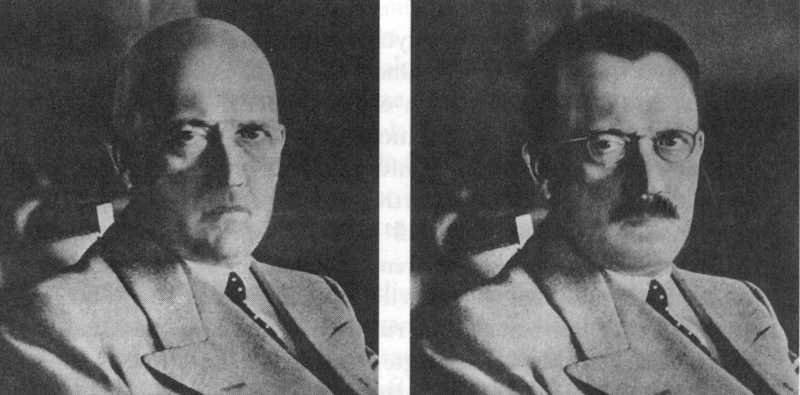By the time WWII stumbled to a close, pictures of Adolf Hitler had permeated every possible media platform available at the time. His mustache, his dark, slicked-back hair, and his disturbingly clear gaze had peered out at Americans – and the rest of the world – for the better part of five years.
As the Allied Forces closed in on the Axis in 1944, rumors and fears began to run rampant among both government and civilian groups that Hitler might change his appearance in an attempt to disappear.
This fear led legendary makeup artist Eddie Senz to create a series of images of Hitler – or at least, of how Hitler might look, should he choose to disguise himself in order to disappear.

Photo Credit: Wikimedia
Eddie Senz said that he came by his love of makeup and sketching naturally – his father was the makeup director for the Metropolitan Opera and often took his son to work with him. Senz spent his career beautifying movie stars, stage stars, and, in one fairly bizarre incident, President Lyndon Johnson’s family (You can listen to a recorded phone call here, in which Johnson claims to be too poor to pay Senz much for his considerable services). In his day, Senz was the reigning authority on beauty, and he often dispensed tutorials and tips in magazines and newspapers.
It was rumored that the government had requested the modified photos of Hitler – at least, that’s what the New York Times reported in 1944, when they ran Senz’s images alongside an article about the Nazi leader’s potential disappearing act.
“These changes are illustrated above from suggestions by Eddie Senz of New York, make-up expert for the screen, stage and opera,” read the caption. “According to Mr. Senz, the hardest feature to hide is Hitler’s eyes—which he says ‘are the most remarkable I have ever seen.’”
In 1998, a fresh mention of the Senz photos appeared in a short article in Der Spiegel, which claimed that the images were commissioned by the OSS office because they “wanted to be prepared for anything and [therefore] instructed New York artist Eddie Senz” to produce the images.
In 2012, they resurfaced again, this time with a host of new ideas about their inception and production: the photos were distributed abroad in order to facilitate hunts for Hitler, the photos were created after D-Day, they were created before D-Day, or even that the photos had never before been seen until Der Spiegel published them in the 90s.
The last is obviously untrue, since the Times published them in 1944, but the others? We may never know who asked Senz to create the images, though I bet that the Times asked for them as an accompaniment to their article. After the piece ran, it’s completely plausible that a government office clipped and kept them in a file, “just in case.”
In fact, according to official records, the OSS made a habit of collecting photographs of prominent people, often from commercial sources. The Senz series is now kept along with images of photographs of military and civilian figures from over seventy-five countries, including Josef Stalin and Mao Tse Tung.

Photo Credit: Wikimedia
After all, before his suicide, it was a very real fear that Hitler might disappear, and conspiracy theorists and many others refused to believe the official story of the dictator’s death for decades afterward. For years, the FBI was flooded with news of Hitler sightings. They investigated some of the claims – perhaps the one where Hitler was spotted in a cafeteria in Los Angeles, or as a deranged violin player in Wisconsin – but of course they never found him. Regardless, people reported that the dictator was living as a communist in Philadelphia, and was in Miami, and had had plastic surgery. He was in the Soviet Union, Argentina, and Denmark.
I think the rumors persisted in part because of how unsatisfactory the truth of his death feels. He got off easy; he never had to face the people he’d harmed, the world he’d destroyed, and take his due punishment.
Weird, wild stuff, huh? Would you have recognized his face, or his eyes, without his trademark features?
Me neither.






